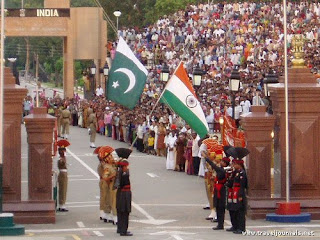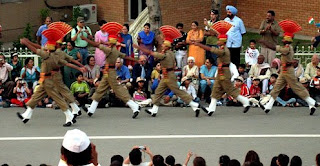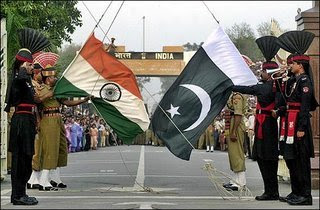The aviation sector is going through a very turbulent phase in India and abroad. In India, domestic air traffic has plunged to a five-year low, as traffic crashed by 19 per cent in September 2008.
As airlines face mounting pressures of a recession, fall in traffic and huge operational costs, how are low cost airlines faring?
So here's a look at the best budget airlines in Asia. Smart Travel Asia, an online travel magazine, rates these airlines on the basis of cheap tickets, reliable schedules, decent service and route network and access. While Air Asia tops the list, Air Deccan and Spicejet also make it to the top 10 list.
1. AirAsia Berhad
Topping the list of low cost carriers is AirAsia. Asia's largest low budget airline is based in Kaula Lumpur and flies domestic & international flights. AirAsia was the first to introduce low cost travelling in Asia. The airline started operations on 18 November 1996. It was founded by the government owned DRB-Hicom. However, the airline ran into rough weather and incurred huge losses. Former Time Warner executive Tony Fernandes took over the company and revived it. "Before a business can grow, it needs to have its costs under control. It must be cost-efficient and profitable, and it must create value," Fernandes believes.
The company under his leadership scaled new heights. AirAsia introduced its low fare, no frills concept in December 2001. AirAsia is also now a public listed company on the Malaysia Stock Exchange. The airline now flies to over 60 destinations. It has a fleet of 69 aircraft.
The AirAsia group, has carried over 35 million passengers. AirAsia also plans to start low-cost flights to India soon. According to Fernandes, the revenue for the quarter ended June 2008 increased by 41 per cent to RM608 million as the airline carried 20 per cent more passengers to 2.8 million with 16 per cent higher fares. 'Now everyone can fly' says AirAsia Berhad's tagline.
2. Jetstar Asia
Jetstar Asia based in Singapore is ranked second among the budget carriers in Asia. The airline first took off for Hong Kong on 13th December, 2004. Qantas and Temasek Holdings (Private) Limited jointly own more than 80 per cent of Jetstar Asia. Jetstar Asia Airways merged with Valuair on 25th July 2005. Both airlines operate out of Singapore and fly to major cities in South-east Asia. The airline boasts of a brand-new fleet, great destinations and friendly crew and affordable experience. It has a fleet size of 10 aircraft.
The company, has seen a 20 per cent jump in revenue and 4 percent rise in passenger load factor to more than 75 per cent for the year ended 31 March 2008. Jetstar Asia is headed by chief executive officer Chong Phit Lian
While fuel accounts for 40 per cent of the group's expenses in the previous year, Jetstar Asia is confident that it is on the path to sustainable growth, according to Chong.
In the Skytrax Airline of the Year survey for 2006, Jetstar Asia was awarded the best low-cost Airline for both the Asia and South-east Asia categories. In 2007, it was ranked as the world's best low cost airlines by SkyTrax.
3. Nok Air
Nok Air based in Bangkok is the third best budget airline in Asia. The 'Nok Air' brand was first established on 10th February 2004 under the company Sky Asia Co. Ltd. NoK Air means 'bird' in Thailand. On January 15th, 2006, the company name was changed to 'Nok Airlines Co. Ltd'. The airline was established in December 2003 and started operations on 23 July 2004. A subsidiary of Thai Airways International, Nok Air plans to add several international destinations to its route.
Known for its innovative measures, the airline also introduced 'Book Online Pay Offline' scheme to help make reservations online without using credit cards. The pre-reserved ticket can be paid at the airline counter services and ATMs. Patee Sarasin is CEO of Nok Air. 'We fly smiles' is the company's tagline.
4. Tiger Airways
Tiger Airways offers one of the lowest possible airfares in the market. Tiger Airways first flew from Singapore in September 2004 with two aircraft in its fleet and three routes in its network. After 3 years, Tiger Airways now flies to more than 25 destinations across 9 countries in Asia-Pacific on a fleet of brand new Airbus A320 aircraft. Tiger Airways recently ordered 50 brand new Airbus A320s to grow its fleet to 70 Airbus aircraft.
Tiger Airways based in Singapore has also launched a new route between Singapore and Bangalore. The Tiger Aviation Group consists of Tiger Airways Singapore and Tiger Airways Australia, both 100 per cent owned by the Tiger Aviation Private Limited. Tony Davis is the CEO of Tiger Airways.
5. Cebu Pacific
Cebu Pacific based in Philippines started operations on March 1996 and pioneered low coast flying in the country. CEB launched its international operations on November 2001 and now flies to Bangkok, Guangzhou, Ho Chi Minh, Hong Kong, Jakarta, Kaohsiung, Kota Kinabalu, Kuala Lumpur, Macau, Osaka, Pusan, Shanghai, Seoul, Singapore, and Taipei. It operates a fleet of 21 aircraft, the youngest fleet in the Philippines with a fleet age of 1.8 years.
CEB offers the lowest year round 'all-inclusive' fares for its domestic sectors. It was first local airline to introduce e-ticketing and booking through SMS in the Philippines.
It is known for on-time performance, schedule reliability, and comfortable flights. Lance Gokongwei is the director, president and CEO of the airline.
6.Virgin Blue
Founded by British businessman Richard Branson's Virgin Group, Virgin Blue took off on 31 August 2000 with just two aircraft. Virgin Blue launched the first low fare airline in Australia. Today, it is recognised as an innovator and leader in the global aviation industry known for good service, on-time performance and value for money. It is also one of the world's most profitable airline groups incorporating Virgin Blue, Pacific Blue (Aust), Pacific Blue (NZ), Polynesian Blue and V Australia.
Virgin Blue was listed on the Australian Stock Exchange in December 2003. Virgin Blue and its international carriers Pacific Blue and Polynesian Blue currently operate a fleet of 60 aircraft.
With more than 31 per cent of the domestic market, Virgin Blue Airlines currently operates over 2100 flights a week to 24 Australian cities and 8 international destinations.
Virgin Blue's total annual passenger numbers exceeds 15 million travellers. Virgin Blue has been named the 'Low Cost Airline of the Year' (Asia Pacific) in the Budgie$ Best in Class Awards.
7. Air Deccan
India's first low cost airline, Air Deccan launched by Captain G R Gopinath, operated its first flight on 23rd August 2003 from Bangalore to Hubli. The airline revolutionized air travel in India by offering tickets for as low as Re 1, making flying a possibility for every Indian. However, the good times did not last for long. Vijay Mallya acquired 26 per cent stake in the airline.
With the Kingfisher logo on all the aircraft's, the airline has a totally new identity and fares are no longer affordable for all. With its main base at Bangalore, Deccan Airways operate 350 flights to more than 65 cities a day within India.
In 2007, the airline was awarded the '2007 Frost & Sullivan Company of the Year' award in the area of Indian commercial aviation, and its managing director, G.R Gopinath was honored with the 'Frost & Sullivan CEO of the Year' award.
8. SpiceJet
SpiceJet started flying in May 2005. By 2008, it became India's second-largest low-cost airline in terms of market share. Based in New Delhi, SpiceJet was earlier known as Royal Airways, a reincarnation of ModiLuft. It was promoted by Ajay Singh, Sanjay Malhotra and the Kansagra family. Rising fuel costs and increasing competition resulted in SpiceJet posting a loss in the first quarter of 2008-09. In July 2008, billionaire Wilbur Ross announced that he would invest about Rs 345 crore (Rs 3.45 billion) in the airline.
SpiceJet started offering fares at Rs 99, which attracted a lot of travellers! Amidst all this turbulence, SpiceJet still offers fares at Rs 99 in some sectors.
SpiceJet was voted as the best low-cost airline in South Asia and Central Asia region by Skytrax in 2007. SpiceJet operates 94 flights daily to 16 cities across India and has a fleet size of 21. SpiceJet was recognized as Best Low Cost Airline for 2007 by TAFI (Travel Agents Federation of India).
SpiceJet voted the Best Low Cost Airline by a reader's survey conducted nationally by India's leading travel magazine Outlook Traveler(Feb 2008).
9. Viva Macau
Viva Macau from China was founded in 2004. The airline gets its name from 'Macau' which is a cosmopolitan city on the southern coast of China and 'Viva' which in Portuguese means 'Hurray'. Viva Macau currently operates a fleet of modern Boeing 767 wide-body jetliners and operates non-stop service in Asia and abroad. It has fleet size of about 15 aircraft. As of July 08, the airline was flying to Sydney, Ho Chi Minh and Jakarta.
The airline also operates a number of charter flights to Japan, including Tokyo. It's likely that their routes will be expanded in the near future. It has plans to fly to Australia. Con Korfiatis is Viva Macau's chief executive officer.
10.Hong Kong Express
Hong Kong Airlines Limited and Hong Kong Express Airways Limited were established in 2001 and 2004 respectively. The two sister airlines provide services between Hong Kong and over 30 cities in Asia. As of April 2008, the fleet comprises 13 Boeing 737-800 aircraft and is expecting to reach over 20 in the near future. Hong Kong Airlines and Hong Kong Express Airways have employed a fleet of all-new Boeing 737-800 aircraft, the average service time of which is one year.
Hong Kong Airlines and Hong Kong Express Airways provide short haul flight services to leisure destinations in Asia.
In the past few months, Hong Kong Express Airways has launched direct scheduled services to Beijing, Shanghai, Osaka, Okinawa, Kagoshima, Manila, Phuket and Bali. More new routes are expected in the near future. Kalid Razack is the chief executive officer of Hong Kong Express Airways.

 These were days when the signs of the just concluded war were everywhere: from the bunkers in our front and backyards to the pieces of exploded bombs that we used to collect as souvenirs. The memories of those many spy dramas that we enacted with our friends in those very real bunkers will forever be amongst my fondest memories. Next year we were also to witness the return of Pakistani prisoners of war. We stood for hours peering through the coils of barbed wires as the prisoners in newly issued shorts, vests and sneakers collected near the Khasa station to await their turn to be sent back to their country.
These were days when the signs of the just concluded war were everywhere: from the bunkers in our front and backyards to the pieces of exploded bombs that we used to collect as souvenirs. The memories of those many spy dramas that we enacted with our friends in those very real bunkers will forever be amongst my fondest memories. Next year we were also to witness the return of Pakistani prisoners of war. We stood for hours peering through the coils of barbed wires as the prisoners in newly issued shorts, vests and sneakers collected near the Khasa station to await their turn to be sent back to their country.

































